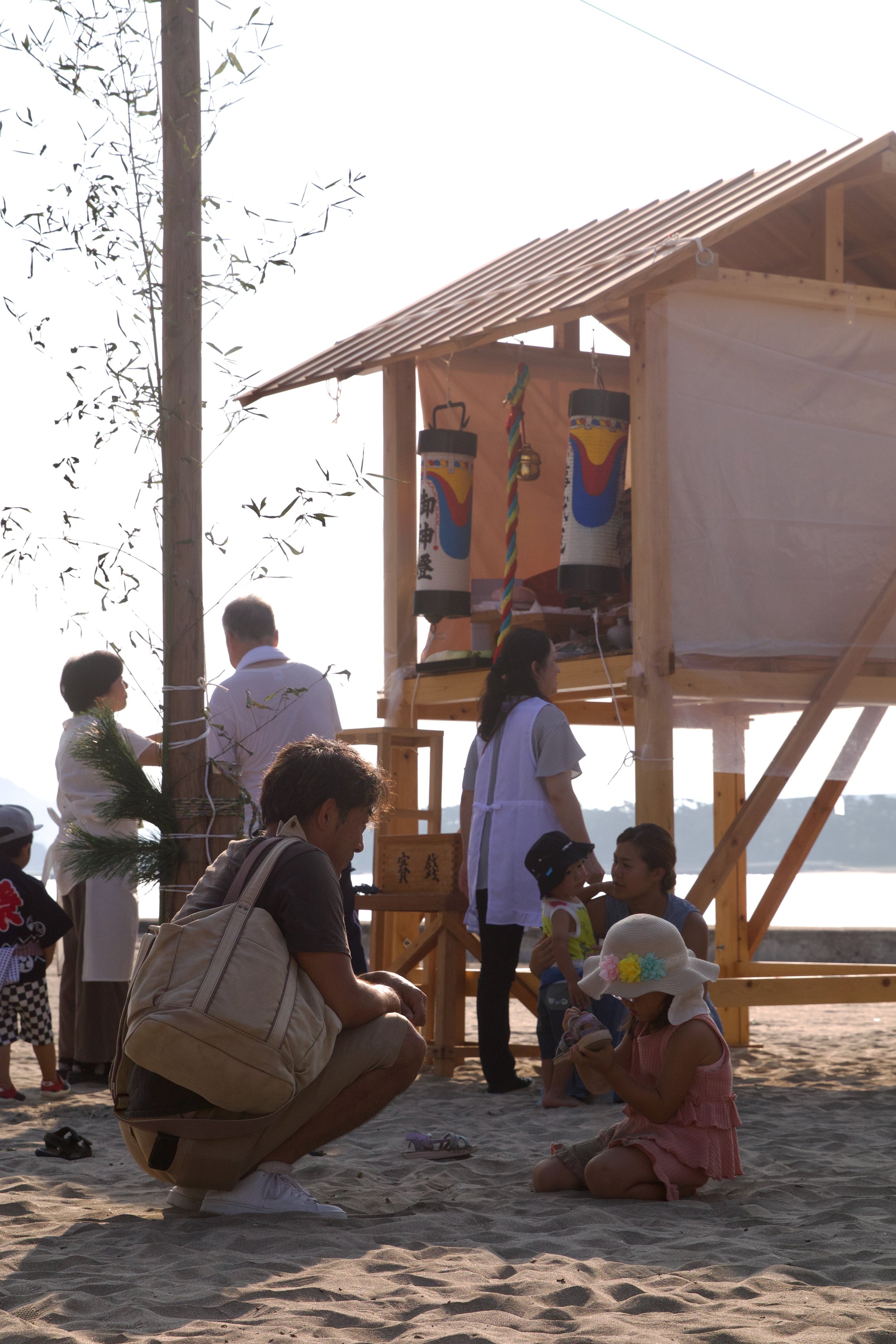Houze Matsuri
Above: Kotoshiro Ward, Takahama. Local children carry a portable shrine through the village and towards the ocean to honor the Life Release Festival. Photo by Florian Koschella.
The community gathers at Toriihama Beach
The Life Release Festival (放生祭), known as fangsheng in Chinese and Houze or Hōjō-e in Japanese, has its origins in ancient Buddhist teachings that emphasize compassion for living beings. This compassion is expressed by releasing animals that have been caught or destined for slaughter.
Originally, people were encouraged to perform these acts of mercy individually, but over time, the custom evolved into large, organized public ceremonies where many animals were released in a single day. The first to initiate such an event is believed to be the Chinese Buddhist monk Zhiyi (538–597). From China, the practice spread to Japan, where it gradually became widespread. However, in modern times, the tradition is rarely observed, except in a few port towns along the Japan Sea, particularly in the city of Obama, Fukui Prefecture where grand festivities take place around Hachiman Shrine in the middle of September.
The festival takes a short break in Kotoshiro Ward, Takahama
A young man admires the portable shrine











